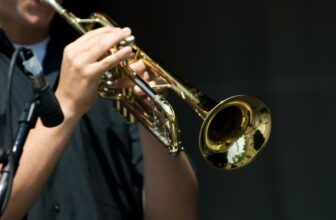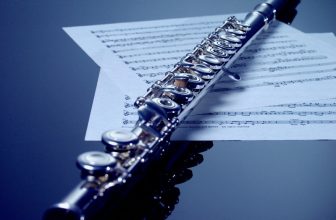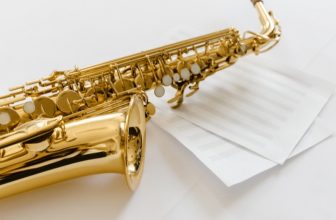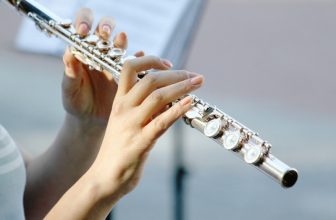Clarinet vs Oboe (What are the Differences?)
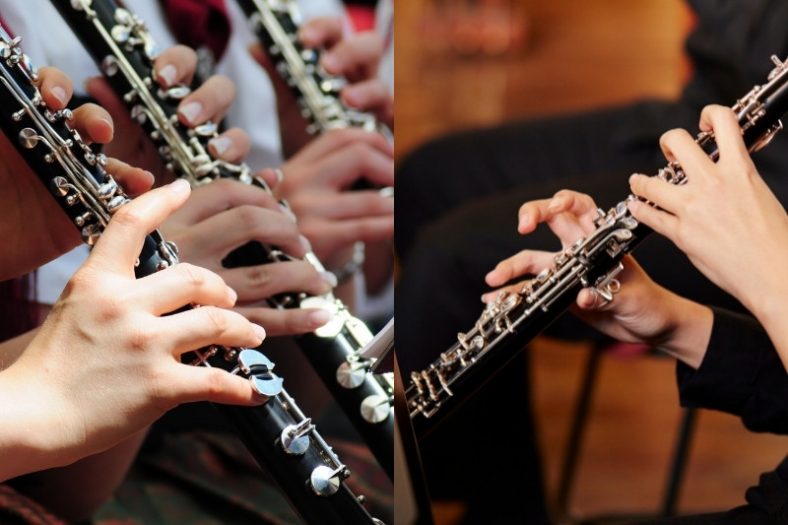
The clarinet is a single-reed instrument that has a gentle, brilliant, and rich sound, while the oboe is a double-reed instrument that has a bright and powerful sound. Both instruments are difficult to master, but, the clarinet is slightly easier due to its embouchure that provides larger air space.
If you’ve never seen a clarinet or an oboe before, they’ll seem very similar at first sight. They have similar black, long and thin body tubes with silver keys on them. The postures of a clarinet player and an oboe player while playing are similar too. So, what are the differences between the clarinet and the oboe?
In this article, I’ll be explaining the differences between the two. In this way, you may have a deeper interest and a new vision, referring to both instruments. Without further ado, let’s start with the physical differences between the clarinet and the oboe.
Contents
- Single-Reed vs Double-Reed
- Producing Sound with the Clarinet vs Producing Sound with the Oboe
- Clarinet Embouchure vs Oboe Embouchure
- The Cylindrical Tube vs The Conical Tube
- The Clarinet Sound vs The Oboe Sound
- Learning to play the Clarinet vs Learning to play the Oboe
- The history of the Clarinet vs The History of the Oboe
- Conclusion
Single-Reed vs Double-Reed
The clarinet is a single-reed instrument, while the oboe is a double-reed instrument. The clarinet and the oboe produce sound in different ways and with different techniques.
A single-reed can’t make any sound on its own. You can’t blow into a single-reed. That’s why you need a mouthpiece and a ligature to produce sound. A double-reed has a mouthpiece itself and it doesn’t need any other accessory to produce sound, you can blow into it.
Producing Sound with the Clarinet vs Producing Sound with the Oboe
Producing sound with the clarinet is easier than producing sound with the oboe. When you blow into the clarinet’s mouthpiece, there is more room for air compared to the small double-reed of the oboe.
The clarinet produces sound through vibrations via air blown into the single-reed, while the oboe produces sound by two reeds vibrating against each other via air blown into the double-reed placed between their lips.
Woodwind instruments use the keys for producing various pitches but the characteristics of their sounds depend on their embouchures and tube forms.
Clarinet Embouchure vs Oboe Embouchure
The clarinet embouchure provides a larger room for the air that you blow into the instrument, compared to the oboe embouchure.
Because the clarinet embouchure is for a single-reed instrument, the lower lip covers the lower teeth to avoid damaging the reed. The oboe embouchure restricts the air you breathe to a tiny space, and both top and bottom lips should cover the teeth surrounding the double reed.
As you can imagine, the oboe embouchure is comparatively tiring for the lips.
The Cylindrical Tube vs The Conical Tube
Besides the reeds, another difference between the clarinet and the oboe that influences their sound is their form. The clarinet has a unique cylindrical tube while the oboe has a conical tube-like all the other woodwind instruments.
The clarinet can capture lower sounds (an octave below), by having the same length as a conical instrument.
The Clarinet Sound vs The Oboe Sound
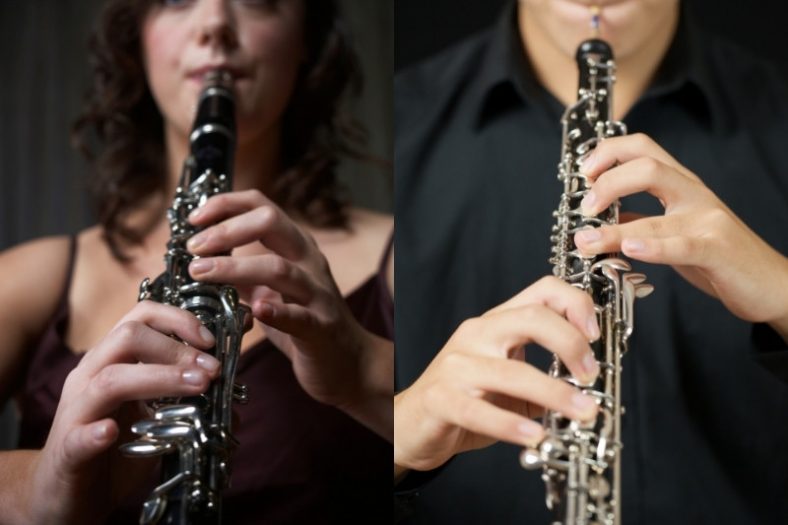
The clarinet produces a gentle, brilliant, dark, bright, caressing, and rich sound, while the sound of the oboe is especially bright and powerful.
In the musical folktale “Peter and the Wolf”, the clarinet is described as sounding like a cat, while the oboe sounds like a duck. This is an interesting analogy that bears some merit.
A clarinet sounds like a harmonica and an organ because of its cylindrical tube, while an oboe sounds like an ancient and still current, Anatolian double-reed wind instrument, the zurna.
This is why the clarinet can be suitable for all genres of music, while the oboe can not. And from another point of view, the oboe’s acerbic timbre is divine and angelic, while the clarinet’s darker timbre is vocal and throaty.
Learning to play the Clarinet vs Learning to play the Oboe
The oboe is a bit harder to learn than the clarinet, though both of them are relatively difficult instruments to learn.
Making a sound with the single-reed and the mouthpiece is less painful and doable, while the process of making a sound only with the oboe’s double-reed is a difficult task. The beginning process is definitely more difficult for the oboe, compared to the clarinet. Also making a beautiful, full sound with the oboe is a big deal. Some people don’t like the oboe’s sound because they’ve never heard a beautiful oboe sound.
The fingering mechanism of the clarinet is more complicated (you have more than three or four optional fingering positions for some notes). But the fingering mechanism of the oboe is more limited.
The register of the clarinet is much wider than the oboe’s register. This means more work for the clarinet to find the ideal sound for each register.
To sum up, it is definitely more difficult to control the sound with the clarinet than with the oboe. If you lose control of the lips or the fingers even for a second, the consequence of it will be an ugly squeak, while it is not the case for the oboe even in such moments.
The clarinet students and even professional artists work hard to avoid the squeaks. I can say that it is one of the worst scenarios possible for a clarinet artist on the stage. Still, there are solutions to avoid it.
Besides, as the clarinet has a wider contemporary, jazz, and world music repertoire than the oboe has, a clarinet student’s learning process will be longer compared to an oboe student’s.
So, the learning difficulty rates of both instruments may change depending on the level of progress. In any case, the oboe will always be one of the hardest instruments to learn.
The history of the Clarinet vs The History of the Oboe
The first ancestors of the clarinet from the Antiquity and the Middle Ages are from Egypt, from the 3rd Century BC. The first ancestors of the oboe are from Mesopotamia, 3000 BC. Later, these first ancestors of the clarinet and the oboe were found and became popular for Greeks and Romans.
In medieval Europe, the version of the single-reed instrument was called chalumeau, while the version of the double-reed instrument was called shawm. These two instruments were grouped under the big Shawm Family.
During the 17th century, with the evolution of the treble shawm in France, “hautbois” was invented by the families Hotteterre and Philidor. Then, the hoboy/hautbois rapidly became one of the most popular instruments in the French court orchestra. In the 18th century, it was already popular all over Europe as a baroque instrument.
Toward the end of the 17th century (1698), Johann Christoph Denner invented the clarinet by developing the chalumeau. During the 18th century, both instruments were developed with extra keys and new tone holes. There were intonation problems that needed to be solved for both instruments.
The production of the clarinets in different tunings was made to find a better intonation and sound. In the beginning, baroque clarinets were in C and D. B, Bb, A, Ab, and G. These versions took place on the market in the second half of the 18th century.
The oboe in this period was already taking its place in the Baroque repertoire with success, while the clarinet was still trying to develop. But, also the oboe needed some kind of sound and construction improvements. Besides the extra keys and holes, the shape of the reed was also changed.
The 19th century was revolutionary for the mechanisms of both instruments. Both clarinet and oboe were introduced in French and German models and systems.
Conclusion
The clarinet and the oboe are two very different instruments, both in terms of their history and the way they are played. The clarinet is a much more complicated instrument than the oboe, and as such, it is much more difficult to control the sound. But, the oboe has a much more limited repertoire, so its learning process is shorter. In any case, both instruments need time and dedication to master.

